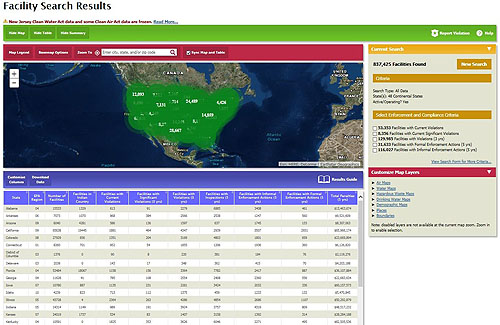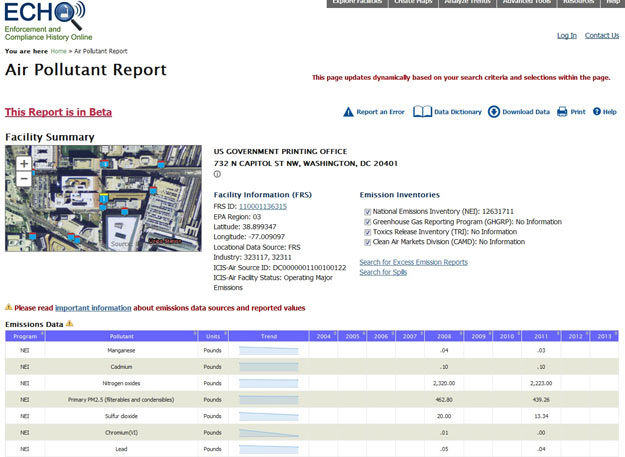New Tools in Environmental Data Analysis
By Jessie Johnson
There is a plethora of sources for environmental data, but it can often lead to a plethora of questions. How do you know where to go for the data? How can you visualize and interpret the data? The website I work on, Enforcement and Compliance History Online (ECHO), has been a resource to help answer these questions since it was launched in 2002. ECHO provides users the ability to search facilities that are in non-compliance with environmental laws and helps make EPA enforcement efforts and regulated entities’ actions more transparent for the public. Comments from ECHO users allow us to continue to improve your access to environmental data.
Our newest update is the new Facility Search Results page called “map filter” that will be launched this fall after testing and review is completed. The EPA ECHO team has worked to create a more user friendly and seamless search that models the new page off of commonly-used search engines. We will be offering easy-to-use filters, access to on-page media-specific search criteria, and customized mapping layer.
So what does all of that mean? With the new results page you will be able to complete a search while looking directly at the map meaning you can see that changes happening in your search occur as you make them, allowing you to adjust your search along the way. The layers include tribal boundaries, hospitals, schools, and other demographic maps to help finish out the story of your map during your search. Our hope is that these changes will lead to a better understanding of enforcement data and more analysis of existing data.
As a geographic information system analyst, I am excited about this tool because I rely heavily on maps and visual aids, and I have found it very helpful to see my search occur on the screen in front of me. I think environmental analysis and decisions are based on many levels of information and not solely based on one facility or one set of data. These new additions will hopefully help the information stand out more, make it easier to understand and help deliver a more efficient product to our users.
Look out for trainings—you can subscribe to our listserv for updates—that will be coming along with the new search tool in late fall to help everyone make this transition seamless and hopefully help generate as much excitement as we have here for the new ECHO map filtering tool.
Figure 2. Preview of a search result and facility summary on the new ECHO Map Filter search page
About the author: Jessie Johnson is the training and outreach coordinator for the Integrated Targeting and Access Branch in Office of Compliance. She also specializes in GIS technology and is working on mapping and analytical access for the public.



